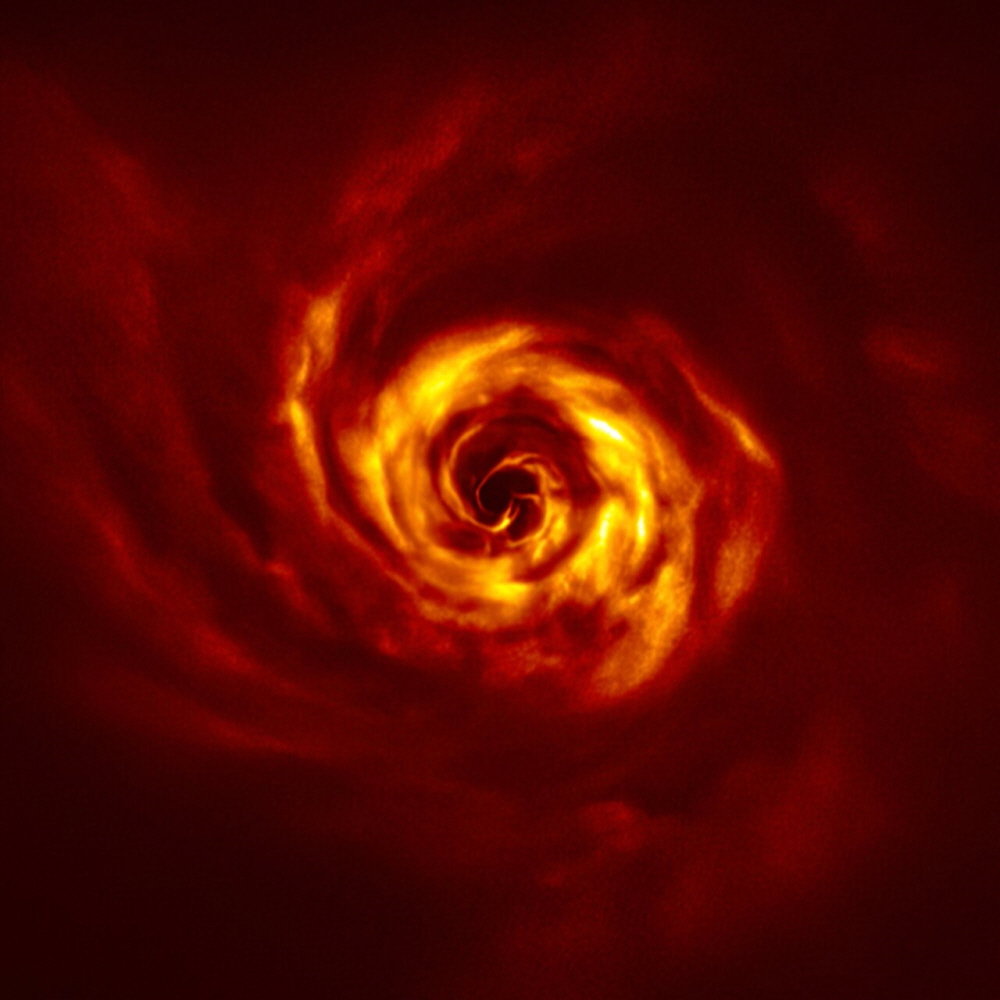
The European Southern Observatory ESO revealed that there is a possibility of capturing the moment when a planet is born from observation using a super-large telescope VLT. Until now, the Kepler Space Telescope has discovered large quantities of alien planets. These planets are theoretically said to have become planets by condensing gases or dust in the universe in the form of disks, but there is no example to observe how they are actually created.
A study published in the International Journal of Astronomy & Astrophysics reveals that swirling disk-shaped dust and gas masses around AE star constellation 520 light-years away from Earth cause a twist toward the center.
In the gas disk, this distortion is caused by the existence of planetary eggs in the center, and the rotation of the gas causes waves to form the disk. When a planet orbits a central star, these waves form a spiral wave. Looking at the photos taken with the observation equipment installed in the VLT, it is analyzed that the size of the arm part caused by such a twist is the distance between the Sun and Neptune, and the planet is growing well in the center.
Currently, ESO is building an extra large telescope with a diameter of 39 m for extraterrestrial research. When this is done, you can observe the planet that is now growing in more detail. The team hopes that the new telescope will provide a more direct and accurate observation of how gas dynamics contribute to planet formation.
Planets grow little by little over the years of millions of years and become primitive planets. As it grows, the gravity becomes stronger and the primitive planets begin to collide as they pull each other. As this protoplanetary collision repeats, the planet grows further. Earth, for example, is estimated to have had 10 protoplanetary impacts up to its present size.
It is not known whether the planets observed in this study will be magnificently large, but if you think that there are stars that are now born or perish somewhere in the night sky, you are once again surprised by the cosmic scale. Related information can be found here .


















Add comment